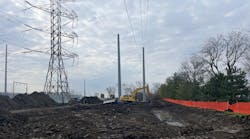Newton-Evans Research Co. is well underway with its tri-ennial tracking study of change occurring in the world's electric power substations, titled The World Market for Substation Automation and Integration Programs in Electric Utilities: 2017-2020. The study will compare the new round of research findings with several earlier substation modernization tracking studies conducted by the company since 1986. More than 75 large and mid-size North American electric power utilities will be participating in this multi-part study, before the focus turns to surveying the International community of electric power utilities in August.
Newton-Evans Research will estimate and forecast the 2017-2020 outlook for North American spending for substation automation and integration programs. Earlier estimates derived from the similar 2013 study stood at $690 million, with an overall potential North American market size of nearly $10 billion. Global potential spending for substation modernization programs had been estimated at about $38-$40 billion. This amount includes spending for a wide range of intelligent substation-resident equipment and devices and the manpower to undertake the systems integration efforts required.
Preliminary Observations:
- It is becoming more difficult to separate substation product classifications as equipment manufacturers tout their offerings as "multi-functional" and the product positioning of many intelligent electronic devices now cuts across multiple product classifications.
- The outlook for increased reliance on commercial services providers working in substation modernization activities remains strongly positive. Third party engineering and integration service firms have continued to make significant strides in winning substation automation-related business, from planning to design to construction and to technical equipment installation.
- Utility manpower shortages and funding issues continue to negatively impact the ability of technology supplier companies to engage utilities for other than short-term automation requirements. In states and provinces wherein regulators have approved strong incentives for reliability improvements or for transmission line extensions, the spending outlook is robust, despite a lack of clarity in some energy policy development activities of federal U.S. agencies.
- In general, retrofitted substations will be upgraded as warranted during the outlook period, based on regional load growth, load criticality to customers, and related distributed generation and renewables siting developments. New substations will increasingly be designed and constructed as integrated and automated remote assets for the utility. The current study finds the bulk of available substation automation budgets likely to be spent for new substations, with continued emphasis on the bulk power system.
- The use of encryption techniques for transmission of substation data continues to grow, at least for wide area data exchanges between control centers and substations as evidenced by early survey returns received by Newton-Evans. This continues a long-term pattern of increased use of encryption for sensitive data communications between and among intelligent devices within the substation and from the substation to the control center.
Additional topics being covered in the four-volume series of substation automation studies include in-depth coverage of several data communications topics, vendor security certification requirements, external systems linkages to the substation, preferred equipment suppliers, substation timing requirements, and an assessment of how North America's electric power substations are positioned along a three-step path to complete automation.


